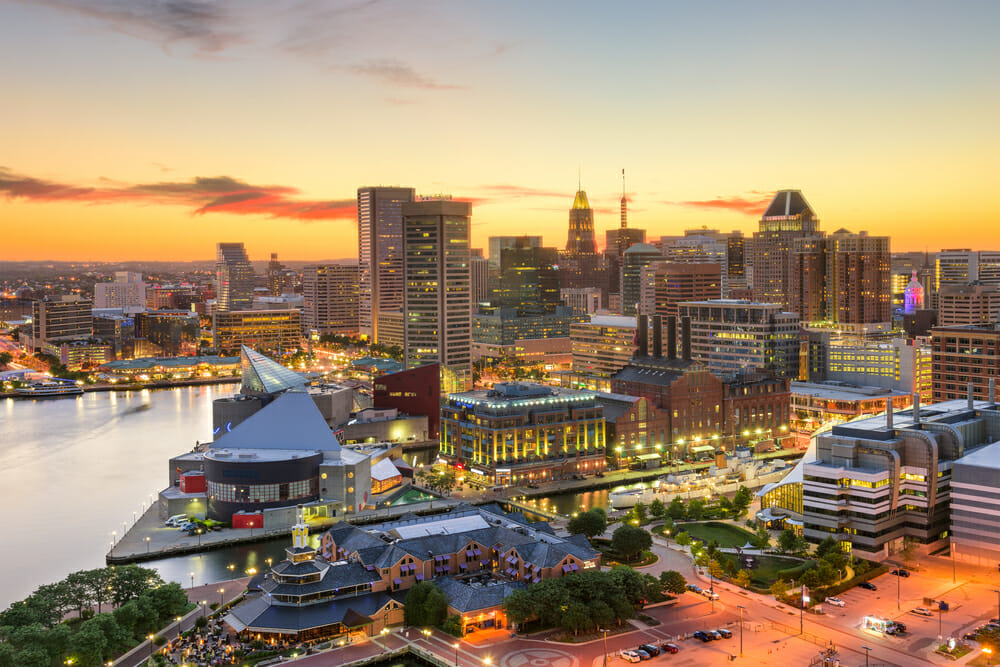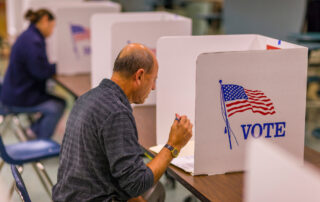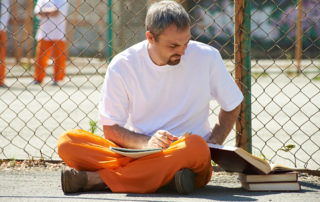
Criminal Rehabilitation and Justice in Maryland
The following sections focus on Maryland prison population statistics, crime rates in Maryland, Maryland’s recidivism rate, criminal rehabilitation in Maryland, and efforts to create alternatives to incarceration in Maryland.
Maryland Prison Population Data
Launching an inquiry into Maryland’s criminal justice system begins with answering key questions like:
- How many people are incarcerated in Maryland?
- What are the biggest prisons in Maryland?
Ascertaining the scope of the prison system in Maryland provides one with quick insight into the criminal justice system in the state. Maryland incarcerates 258 people for every 100,000 residents, the 33rd highest incarceration rate in the nation. Maryland has a slightly higher incarceration rate than New Mexico but a slightly lower incarceration rate than Iowa.1
Per its 2019 data, the National Institute of Corrections reports Maryland has 30 jails in 23 counties, with a jail population of about 12,160.2
Maryland also operates 19 prisons across the state, with a population of 18,595. Maryland’s community corrections system includes 70,227 people under probation and 9,669 under parole. Maryland operates its corrections department on a budget of $793,000,000 per year. According to the Urban Institute, Maryland’s Department of Corrections is the 7th costliest item in the state’s annual budget.3
The majority of Maryland’s budget for corrections goes to the state’s 19 prisons. The largest of these institutions is the Western Correctional Institution. Located in Cumberland, Maryland, this prison has a capacity of 1,793 inmates.4
Also of note, the state has been moving away from private prisons. In 2000, 127 Maryland inmates were locked up in private prisons. But by 2019, private prisons housed only 29 Maryland inmates. There is just one federal prison in Maryland.5
Though Maryland has a comparatively low incarceration rate when compared to other U.S. states, Maryland’s incarceration rate is still relatively high when compared to other first-world democracies. However, both Maryland’s prison incarceration rate and its jail incarceration rate have been slowly declining since the mid-2000s, suggesting the state has been implementing new ways of addressing crime and punishment.
Crime Rates in Maryland

Overall, crime rates in Maryland are declining. According to the state’s own Uniform Crime Reporting Program, an annual report that has analyzed Maryland crime since 1975, crime rates declined in almost every category in 2020, despite rising crime rates across much of the U.S. that year. Quoting report author and Division Director Ida J. Williams, “There were 123,439 total crime incidents reported in 2020, compared to 145,815 in 2019. The crime index total changed -15.35 percent in 2020 when compared to 2019. Violent crime changed -10.10 percent. The violent crime group consists of murder, rape, robbery and aggravated assault. Property crime changed -16.58 percent. The composition of the property crime group is breaking or entering, larceny-theft and motor vehicle theft.” According to the report, murder was the only crime that increased in Maryland in 2020, rising 5.5% over 2019’s figures.6
As crime rates fell across Maryland in 2020, so did arrests. The report cited above recorded 127,748 arrests in 2020, compared to 178,890 arrests in 2019. Further, no Maryland law enforcement officer died in the line of duty in 2020, despite millions of interactions with the public. And even though the report recorded 2,366 assaults of law enforcement officers, that figure represents a 9.5% decline in officer assaults from 2019.
Maryland Recidivism
Recidivism is one of the most powerful insights into a state’s criminal justice system. Unfortunately, Maryland has a relatively high recidivism rate, despite the state’s improvements in its criminal justice system. One report titled “Recidivism and Barriers to Successful Reentry” records Maryland’s recidivism rate at 40%, indicating almost half of the offenders who go through Maryland jails and prisons will re-offend and return to jail or prison.7
Reducing the Maryland recidivism rate will depend on Maryland policymakers and criminal justice experts advancing evidence-based reform and rehabilitation modalities to ensure the Corrections Department is truly helping offenders get to the bottom of what caused them to offend in the first place. Only in this way will offenders experience real reform and rehabilitation while in jail or prison.
Criminal Reform and Alternatives to Incarceration in Maryland

Criminal reform in Maryland is unique to the state, with Maryland criminal rehabilitation programs providing offenders a way to examine their behavior and find ways to cope with life without turning to criminal activity. These programs have some workability, certainly, but improvements should be encouraged.
Currently, some of the reform programs in prisons in Maryland and some of the alternatives to incarceration in Maryland include:
- Work release
- Sober living homes
- Electronic monitoring
- Drug court for veterans
- Deferred adjudication programs
- Probation as an alternative to incarceration
- Drug court for drug and alcohol-related crimes
Looking to the future, lawmakers and criminal justice reform advocates should push for educational programs inside prisons in Maryland and rehabilitation programs inside prisons in Maryland. Such programs will be critical in reducing incarceration and creating a Maryland that does not rely so heavily on jails, prisons, and its criminal justice system to create a safe, peaceful, and equitable society.
Sources:
- BJS. “Prisoners in 2020 – Statistical Tables.” Bureau of Justice Statistics, 2020. bjs.ojp.gov
- NIC. “Maryland 2019.” National Institute of Corrections, 2019. nicic.gov
- Urban. “Project Maryland.” Project Maryland, 2022. urban.org
- DPSCS. “Western Correctional Institution.” Department of Public Safety & Correctional Services, 2022. dpscs.state.md.us
- SentencingProject. “Private Prisons in the United States.” The Sentencing Project, 2019. sentencingproject.org
- MDSP. “Crime in Maryland: 2020 Uniform Crime Report.” Maryland Department of State Police, 2020. mdsp.maryland.gov
- PSC. “Recidivism and Barriers to Successful Reentry.” Public Service Scholars, 2016. publicservicescholars.umbc.edu
Related Articles
How States are Grappling with Young People Who Commit Crimes
According to the Office of Juvenile Justice and Delinquency Prevention, the U.S. recorded 424,300 arrests of persons under 18 in 2020. Of those crimes, 930...
Read more >>
Criminal Justice Reform Extends Rights to Felons Who Have Served Their Sentences
For decades, voter enfranchisement or disenfranchisement for incarcerated and formerly incarcerated individuals has been debated. An estimated 4.6 million Americans are barred from voting due...
Read more >>
Journey from Hate and Violence to Hope and Faith
My success story starts when I took and completed the Criminon course The Way to Happiness. I’ve been incarcerated in prison since I was 18...
Read more >>




